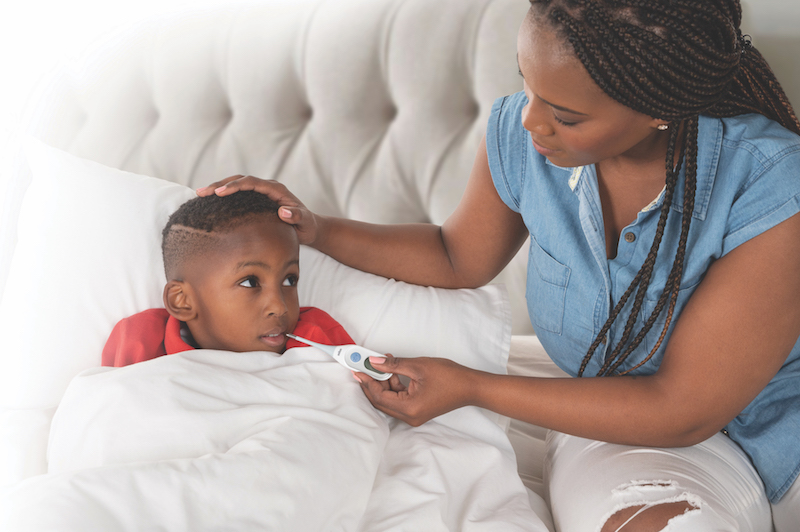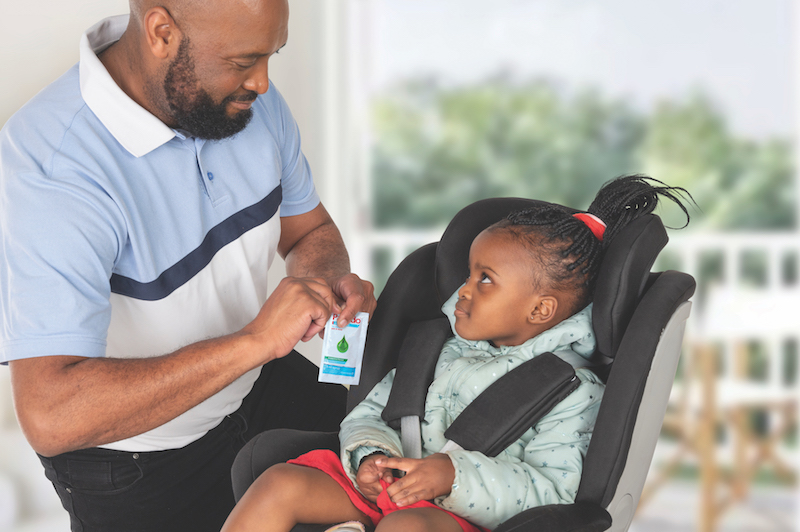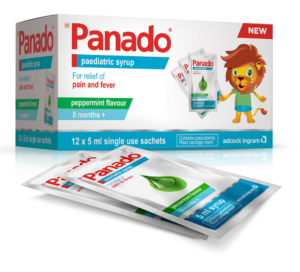While science has taught us never to underestimate the power of germs, sometimes these microscopic critters are simply too crafty, even for the most stringent germ detective.
Is Winter To Blame For Childhood Colds?
Welcome to winter – the season of snuggles, bear hugs, hot chocolate, colds, and flu! Of course, winter isn’t actually to blame for the spread of pesky viruses, but the cold does seem to shake viruses into action. Some studies have shown that many virus strains replicate better at colder temperatures.1
In addition, when the weather dips, families tend to spend more time huddled indoors with their windows closed, increasing their chances of breathing in the same air as someone who is sick and consequently getting the illness.2
When one child begins sneezing and coughing, a domino effect quickly occurs, and everyone who lives under your roof is hopelessly curled in bed like a bear with a sore head.

What Is The Distinction Between Colds And Flu?
Colds and the flu are both respiratory diseases caused by different viruses. Rhinoviruses cause 30–50 percent of all colds, and coronaviruses cause 10–15 percent of all colds.3
Influenza viruses are responsible for flu-like illnesses and symptoms are characterized by fever, headache, cough, sore throat, nasal congestion, weakness and loss of appetite.3
What Are the Symptoms and Signs of a Cold?
Acute upper respiratory tract viral infections (URTIs) are the most common diseases of human beings, with adults having two to five common colds each year and school children having from seven to ten colds per year.3
A tickling in the throat, a runny or stuffy nose, and sneezing are among the initial symptoms of a cold. Those who have colds may also experience headaches, chills and a cough. Nasal mucus may thicken and turn yellow or green. Generally, the severity of symptoms increases rapidly, peaking 2–3 days after infection and lasting for about 7–10 days.3

How to Treat and Prevent Colds in Children
It is possible to protect your child from colds by ensuring that they practice good hand hygiene by washing their hands often with soap and water, avoiding touching their eyes, nose, and mouth with unwashed hands, and avoiding contact with sick children and adults.4
There is no cure for a cold. Colds, like the majority of viral diseases, must run their course. Rest and fluids – juice and water – might help your child feel better while they are recovering.4
If your child does become ill with a cold, some medications can be used to alleviate their symptoms while their body recovers. These include saline nasal sprays or decongestants for a blocked or runny nose, lozenges for a sore throat, and paracetamol for fever and pain, such as the conveniently packaged Panado® Paediatric Syrup, Peppermint 5 ml Sachets.

Panado® Paediatric Syrup, Peppermint 5ml Sachets contain paracetamol, an effective option for treatment of pain and fever in children.5
Other Panado® Products Suitable For Your Child*
In addition to Panado® Paediatric Syrup, Peppermint 5 ml Sachets, Panado’s range for children includes Panado® Paediatric Syrup, Strawberry (50 ml | 100 ml),6 Panado® Paediatric Syrup, Peppermint Alcohol and Sugar-Free (50 ml | 100 ml),7 and Panado® Infant Drops 20 ml.8
Make pain and fever care easy by shopping for Panado products from independent pharmacies and selected Clicks, Dis-Chem, and Pick ‘n Pay stores. For more information, visit https://panado.co.za/and join the conversations onFacebook. #Panado #ADoseOfCare
*For infants aged 3 months and older.
ends
2022042510198726
References:
1. Foxman EF, Dtorer JA, Fitzgerald ME, Wasik BR, Hou L, Zhao et al. Temperature-dependent innate defense against the common cold virus limits viral replication at warm temperature in mouse airway cells. Proc Natl Acad Sci U S A. 2015;112(3):827-832. doi:10.1073/pnas.1411030112. Cited 2022 March 29]; Available from https://www.ncbi.nlm.nih.gov/pmc/articles/PMC4311828/
2. Acharya B, Thapa K. Indoor staying during winter season makes people more susceptible to flu. J Nepal Health Res Counc. 2016 Jan;14(32):69-70. PMID: 27426715. Cited 2022 March 29]; Available from https://pubmed.ncbi.nlm.nih.gov/27426715/
3. Eccles R. Understanding the symptoms of the common cold and influenza. Lancet Infect Dis. 2005;5(11):718-725. doi:10.1016/S1473-3099(05)70270-X. [Cited 2022 March 29]; Available from https://www.ncbi.nlm.nih.gov/pmc/articles/PMC7185637/
4. National Center for Immunizations and Respiratory Diseases, Division of Viral Diseases. Common Colds: Protect yourself and others. [Cited 2022 March 29]; Available from https://www.cdc.gov/features/rhinoviruses/index.html
5. De Martino M, Chiarugi A. Recent advances in paediatric use of oral paracetamol in fever and pain management. Pain Ther 2015;4:149–168. DOI 10.1007/s40122-015-0040-z. [Cited 2022 March 29]; Available from https://www.ncbi.nlm.nih.gov/pmc/articles/PMC1971248/
6. Panado® Paediatric Syrup Strawberry (Syrup). Approved package insert, March 2002.
7. Panado® Paediatric Syrup Alcohol & Sugar-Free / Panado® Paediatric Syrup. Approved package insert, April 2010.
8. Panado® Infant Drops (Drops). Approved package insert, August 1990.
We understand that there are many aspects that encompass a Mother, Father or Child and strive toward providing resources and services that accommodates this.
Our content is aimed to inform and educate families on issues starting from pregnancy through to the challenges of the teen-age years.
- Say Hello to the Ultimate Holiday Brunch Bite - December 17, 2025
- Tiny Toons Looniversity Returns: Meet the Voice Behind Plucky and Hamton! - December 12, 2025
- From Pain to Possibility: Panado®’s New Marketing Campaign, Highlights The Joy Of Pain Relief - December 10, 2025





